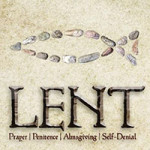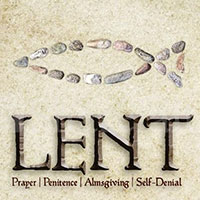 Lent is a season of the Christian Year where Christians focus on simple living, prayer, and fasting in order to grow closer to God.
Lent is a season of the Christian Year where Christians focus on simple living, prayer, and fasting in order to grow closer to God.
When is Lent?
Lent is a season of forty days, not counting Sundays, which begins on Ash Wednesday and ends on Holy Saturday. The forty days represents the time Jesus spent in the wilderness, enduring the temptation of Satan and preparing to begin his ministry.
Lent is a time of repentance, fasting and preparation for the coming of Easter. It is a time of self-examination and reflection. It is a time when Christians focus on their relationship with God, often choosing to give up something or to volunteer and give of themselves for others.
Sundays in Lent are not counted in the forty days because each Sunday represents a “mini-Easter” and the reverent spirit of Lent is tempered with joyful anticipation of the Resurrection.
Mardi Gras? What does that have to do with JESUS??
Mardi Gras means “Fat Tuesday.” It refers to the day before Lent starts. Since Lent always starts on a Wednesday, the day before is always a Tuesday. And it’s called “Fat” or “Great” because it’s associated with great food and parties.
In earlier times, people used Lent as a time of fasting and repentance. Since they didn’t want to be tempted by sweets, meat and other distractions in the house, they cleaned out their cabinets. They used up all the sugar and yeast in sweet breads before the Lent season started, and fixed meals with all the meat available. It was a great feast! Through the years Mardi Gras has evolved (in some places) into a pretty wild party with little to do with preparing for the Lenten season of repentance and simplicity. Oh well. But Christians still know its origin, and hang onto the true Spirit of the season.
So the real beginning of Lent is Ash Wednesday?
Yes. Ash Wednesday, the day after Mardi Gras, usually begins with a service where we recognize our mortality, repent of our sins, and return to our loving God. We recognize life as a precious gift from God, and re-turn our lives towards Jesus Christ. We may make resolutions and commit to change our lives over the next forty days so that we might be more like Christ. In an Ash Wednesday service, usually a minister or priest marks the sign of the cross on a person’s forehead with ashes.
Why ashes?
In Jewish and Christian history, ashes are a sign of mortality and repentance. Mortality, because when we die, our bodies eventually decompose and we become dust/ dirt/ash/whatever. Repentance, because long ago, when people felt remorse for something they did, they would put ashes on their head and wear “sackcloth” (scratchy clothing) to remind them that sin is pretty uncomfortable and leads to a sort of death of the spirit. This was their way of confessing their sins and asking for forgiveness.
Where do the ashes come from?
On what we now call Palm Sunday, Jesus rode a donkey into Jerusalem while people waved palms and cheered him on. Less than a week later, Jesus was killed. The palms that were waved in joy became ashes of sorrow. We get ashes for Ash Wednesday by saving the palms from Palm Sunday, burning them, and mixing them with a little water (like tears) or oil. It’s symbolic.
What do Christians do with ashes?
At an Ash Wednesday service, folks are invited to come forward to receive the ashes. The minister will make a small cross on your forehead by smudging the ashes. While the ashes remind us of our mortality and sin, the cross reminds us of Jesus’ resurrection (life after death) and forgiveness. It’s a powerful, non-verbal way that we can experience God’s forgiveness and renewal as we return to Jesus.
Why “DO” Lent? How do I start?
Are you searching for something more? Tired of running in circles, but not really living life with direction, purpose or passion? It’s pretty easy to get caught up in the drama of classes, relationships, family, and work. Our lives are filled with distractions that take us away from living a life with Christ. We try to fill the emptiness inside us with mindless TV, meaningless chatter, stimulants, alcohol, too many activities or other irrelevant stuff. We run away from life and from God.
Lent is a great time to “repent” — to return to God and re-focus our lives to be more in line with Jesus. It’s a 40 day trial run in changing your lifestyle and letting God change your heart. You might try one of these practices for Lent:
FASTING: Some people have been known to go without food for days. But that’s not the only way to fast. You can fast by cutting out some of the things in your life that distract you from God. Some Christians use the whole 40 days to fast from candy, TV, soft drinks, cigarettes or meat as a way to purify their bodies and lives. You might skip one meal a day and use that time to pray instead. Or you can give up some activity like worry or reality TV to spend time outside enjoying God’s creation. What do you need to let go of or “fast” from in order to focus on God? What clutters your calendar and life? How can you simplify your life in terms of what you eat, wear or do?
SERVICE: Some Christians take something on for Christ. You can collect food for the needy, volunteer once a week to tutor children, or work for reform and justice in your community. You can commit to help a different stranger, co-worker or friend everyday of Lent. Serving others is one way we serve God.
PRAYER: Christians also use Lent as a time of intentional prayer. You can pray while you walk, create music or art as a prayer to God, or savor a time of quiet listening. All can be ways of becoming more in tune with God.
Text for this article borrowed from The Upper Room.









 Our Latest Updates on
Our Latest Updates on